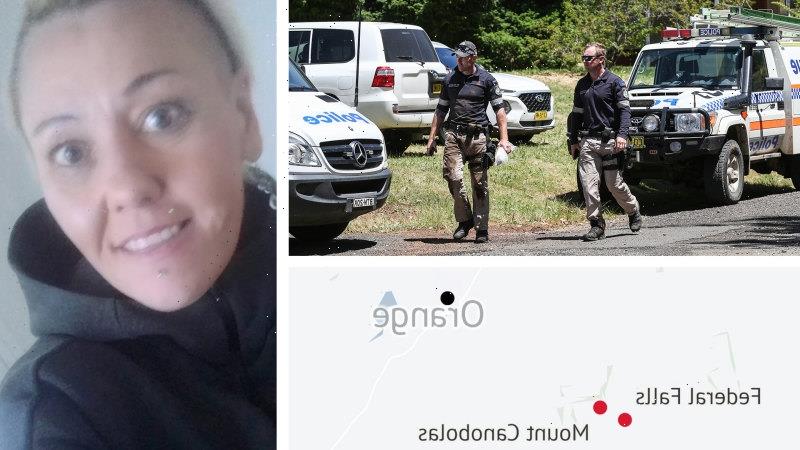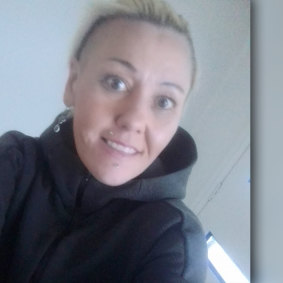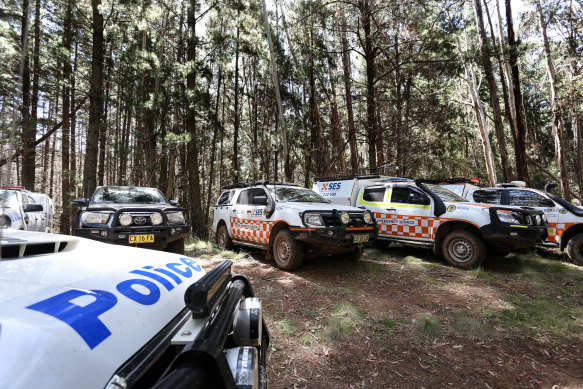It began with a lovers’ spat, an argument between Esther Wallace and her partner at the top of a bushwalking trail.
The body of Esther Wallace was found on Sunday afternoon.
Authorities disagree about what the fight was about, either the pair’s relationship woes or the best path to find a spot to watch the sunrise in the Central NSW national park, but all accounts end in tragedy. They are also certain her partner is not a suspect in relation to her death.
About 1am on November 30, an upset Wallace took off from her partner, alone and wearing sandals through dangerously dense bushland at Federal Falls Track at Mount Canobolas in the middle of the night.
Wallace’s body was found on Sunday afternoon after an extensive 12-day search and authorities are revealing more about how the 47-year-old ended up two kilometres away from where she was last seen.
Police have confirmed to The Sydney Morning Herald and The Age a needle found during the search has been taken into evidence and toxicology tests were conducted on Wallace’s body. Any evidence of drug use will form part of the report for the coroner.
The report will also examine Wallace’s mental health issues – details of which members of the search party say were withheld by detectives from those on the ground until four days after her disappearance.
Search party members not authorised to speak publicly on the details of the investigation have told the Herald they believe Wallace may have been frightened and felt threatened by the level of police presence during the first few days of the search, prompting her to flee further into bushland.
“If we had known, we could have done an entirely different search,” a member of the search party said.
Acting superintendent Gerard Lawson, the relieving commander at Central West Police District, said hindsight “was a wonderful gift”.
“I would applaud all the volunteers involved in this search, these are people who gave up work,” he said.
Multiple SES and police crews were brought in for the search of the mum in her 40s.Credit:Steve Gosch
Lawson stressed that Wallace’s disappearance was not being treated as suspicious, as members of the tight-knit Tottenham community continue to blame Wallace’s partner.
“We have been pretty explicit that the community should not draw their own conclusions,” he said, adding Wallace’s partner had been co-operative and helpful throughout the saga.
Along with the toll on the small town, volunteers from the Orange unit of the State Emergency Service are mentally and physically “spent” after the 12-day search.
Volunteers suffered broken bones, twisted ankles, and some were bitten by snakes and went into anaphylaxis as they battled through dense bush. The search was four times longer than any missing-person search the Orange unit had previously conducted.
NSW SES Orange City Deputy Commander Paul Beard said the bushland where Wallace’s body was found was so dense you could be standing next to someone and not see them.
“We have a lot of people down,” he said.
By day five, sentiment within the search shifted. They began treating it less as a missing person’s case and started thinking of it as a recovery.
Beard was part of the group that found Wallace’s body on Sunday afternoon and said the conclusion was quickly drawn that she died of hypothermia. He believed Wallace had survived for several days before succumbing to the condition.
Wallace’s clothing was dumped throughout the bushland and discovered in the days leading up to finding her body. Beard said this was likely to be because of “paradoxical undressing”, a phenomenon where victims of severe hypothermia take off their clothes as they begin to feel hot due to nerve damage from the cold.
“Orange SES is called to multiple scenarios of similar circumstances a year and we commit all our resources to aid in the police search to either bring the person home or bring closure to the family,” Beard said.
He hoped Wallace’s body being found would bring some closure to her adult children.
“Obviously, scenarios such as this take a physical and mental toll, especially when we are out there on the ground through rugged terrain, however, we don’t join the State Emergency Service if we are not fully capable of going through such circumstances. It doesn’t make it easier as it comes, but we are fully aware of what we are getting ourselves into.”
Wallace’s family, as well as her partner, were contacted for comment.
Crisis support is available from Lifeline on 13 11 14.
The Morning Edition newsletter is our guide to the day’s most important and interesting stories, analysis and insights. Sign up here.
Most Viewed in National
From our partners
Source: Read Full Article


